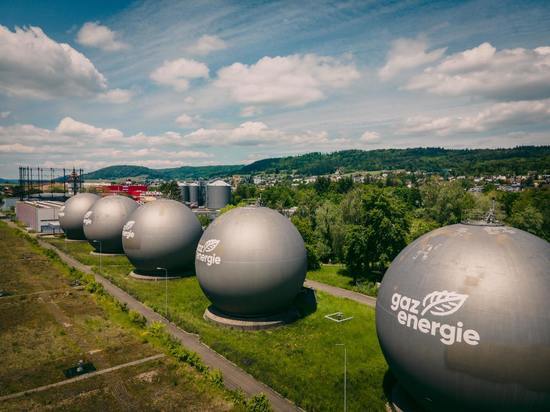American experts predicted an energy crisis for Europe without Russian gas: and offered their own
[ad_1]

In February, stocks of “blue fuel” in the EU may fall to a critical level
At the very beginning of next year, Europe’s gas reserves, in the event of a halt in supplies from Russia, run the risk of being almost completely depleted. According to the International Energy Agency, the inhabitants of the Old World will survive the heating season without deplorable consequences through serious energy savings, as well as an increase in the import of liquefied fuel from American companies. Experts estimate the additional costs of Europeans for the purchase of alternative raw materials at several billion dollars.
The crisis situation in the energy market of the Old World will continue in 2023. Such a disappointing scenario is no longer warned by Russian or European analysts, as it was before, but by experts from the International Energy Agency (IEA), representing the interests of the US Department of Energy. “The forecast continues to be vague. All signs indicate that the situation will be very tense,” the organization’s new monitoring report says. Although at the end of September, European underground gas storage facilities were almost 90% full, by February the fuel reserves of the Old World are at risk of being reduced to 5%. Such consequences could be caused by a halt in the supply of Russian pipeline gas to consumers on the continent, as well as a limited supply of liquefied fuel.
For the passage of the heating season, the IEA urges Europeans to put energy saving measures in the first place. “In order to maintain stocks in storage above 25%, EU countries will need to reduce gas demand in winter by 9% compared to the average level over the past five years,” analysts calculated. To save half of the stocks in UGS, the inhabitants of the Old World will have to cut the consumption of “blue fuel” by almost a quarter.
The reason for all these European troubles has long been clear to everyone: “self-shooting” anti-Russian sanctions in the energy sector. Of course, the IEA report does not mention this. But facts are stubborn things. If last year the share of Russian gas amounted to about 40% of all EU imports, now supplies are close to historical anti-records: both Nord Streams have been put out of action for a long time, and most other Russian transport routes to Europe have been blocked by Western sanctions. The last export pipeline from our country, which continues to operate at the same level, remains the Turkish Stream, but the capacity of the Black Sea branch alone is clearly not enough to ensure the full export of hydrocarbons to the Old World. In turn, the transit of gas through Ukraine is now carried out in small volumes. American analysts advise Europeans to replace the loss of Russian hydrocarbons by increasing LNG imports: the countries of the continent will have to purchase 60 million tons of liquefied gas more than usual in order to painlessly survive the winter frosts.
According to Igor Yushkov, an expert at the Financial University under the Government of the Russian Federation, it is not without reason that IEA analysts make it clear that EU consumers will not be able to do without an increase in LNG purchases in the coming cold weather. After all, this is a direct, selfish interest. In September, American liquefied fuel producers significantly increased their exports, more than 70% of which went to European countries. “The International Energy Agency, whose main task is to promote American commodity corporations, is in fact openly hinting to EU members that next year they will have to buy the lion’s share of “blue fuel” from overseas,” the expert notes.
Meanwhile, whether European countries should rely on energy assistance from American miners is not yet clear. Despite the increase in exports, LNG production in the United States is still far from the maximum values. A June fire at the Texas Freeport plant caused a long-term shutdown of a major terminal that provides 20% of US LPG output. The owners do not give specific forecasts when the enterprise will start working, so it is doubtful that American manufacturers will be able to find the necessary resources for their European partners.
“We should also not forget that EU countries that decide to replace Russian pipeline gas with liquefied fuel from the United States may have problems with the delivery of raw materials,” warns investment strategist at Arikacapital Sergey Suverov. — There is a severe shortage of floating LNG terminals on the world market. Rental rates for specialized tankers have doubled. Demand for transport vessels is unlikely to subside in the near future. Already, the shortage of tankers is so great that the availability of alternative raw materials for European countries is declining. With a high degree of probability, it can be assumed that energy prices will grow in proportion to the reduction of gas reserves in the UGS facilities of the continent, therefore, in the next two or three months, the additional costs of European countries for the purchase of gas will increase by several billion.”
[ad_2]
Source link






